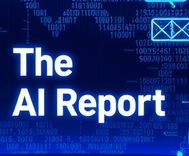Scientists just developed a new AI modeled on the human brain — it's outperforming LLMs like ChatGPT at reasoning tasks

The AI Report
Daily AI, ML, LLM and agents news
For all their impressive feats, current large language models (LLMs) often stumble when confronted with true reasoning challenges. We’ve seen them generate plausible text, but their ability to logically deconstruct and solve complex, abstract problems remains a significant hurdle. This limitation raises a critical question: Can AI truly think, or does it merely mimic? A groundbreaking new artificial intelligence model, the Hierarchical Reasoning Model (HRM), offers a compelling answer by fundamentally changing how AI approaches complex thought, drawing inspiration directly from the human brain.
Beyond Superficial Intelligence: A New Approach to Reasoning
Developed by scientists at Sapient, the HRM isn't just another iteration of an LLM. It’s a revolutionary architecture designed to mimic the human brain’s hierarchical and multi-timescale processing—how our different brain regions integrate information across varying durations. This enables a more profound form of reasoning, moving beyond the pattern recognition capabilities of its predecessors.
The benefits are immediate and substantial. While leading LLMs like OpenAI’s o3-mini-high, Anthropic’s Claude 3.7, and Deepseek R1 struggle with efficiency and deep logical deduction, HRM achieves superior performance with remarkable efficiency. Consider its footprint: a mere 27 million parameters and only 1,000 training samples. This contrasts sharply with the billions, or even trillions, of parameters required by advanced LLMs like the estimated 3 to 5 trillion for GPT-5.
Outperforming the Giants on Logic
The true test of an AI’s reasoning capability lies in benchmarks like ARC-AGI, a notoriously difficult examination designed to gauge progress toward artificial general intelligence (AGI). Here, HRM didn't just compete; it excelled. In the ARC-AGI-1 benchmark, HRM scored 40.3%, significantly outperforming o3-mini-high (34.5%), Claude 3.7 (21.2%), and Deepseek R1 (15.8%). The gap widened even further in the tougher ARC-AGI-2, where HRM achieved 5%, compared to o3-mini-high’s 3%, Deepseek R1’s 1.3%, and Claude 3.7’s 0.9%.
These aren't incremental improvements; they represent a fundamental shift. HRM consistently cracked challenging tasks like complex Sudoku puzzles and optimal path-finding in mazes, problems where conventional LLMs typically fall short.
How HRM Reimagines AI Thought Processes
Traditional advanced LLMs often rely on "chain-of-thought" (CoT) reasoning, breaking down complex problems into simpler, natural language steps. While intuitive, CoT has inherent weaknesses: brittle task decomposition, extensive data requirements, and high latency. HRM circumvents these by executing sequential reasoning tasks in a single forward pass, without explicit supervision of intermediate steps.
The Two-Module Advantage
HRM operates through two distinct, yet integrated, modules: a high-level module for slow, abstract planning, and a low-level module for rapid, detailed computations. This mirrors the specialized, yet coordinated, activity of the human brain. The system employs iterative refinement, a technique that improves solution accuracy through repeated adjustments over short bursts of "thinking," constantly assessing whether to continue refining or deliver a final answer.
What This Means for the Future of AI
The advent of HRM points toward a future where AI is not just more powerful, but genuinely more intelligent, efficient, and reliable. Imagine AI systems capable of robust logical deduction in real-time, requiring less computational power and fewer training examples to master intricate problems. This has profound implications for every field, from scientific discovery to complex logistics and personalized learning, enabling AI to tackle challenges currently beyond its grasp.
While the study is a preprint, its findings have been independently reproduced, adding weight to its claims. This work reminds us that true intelligence often emerges from elegantly structured, efficient processing, not merely from scaling up existing models.
Embracing the Era of Intuitive AI
This development invites us to rethink our expectations of artificial intelligence. Are we ready for a generation of AI that can reason, plan, and solve problems with a level of abstraction previously reserved for human cognition? The journey towards artificial general intelligence is long, but models like HRM illuminate a promising path forward—one that prioritizes genuine understanding and efficient thought over brute-force data processing. Engage with these advancements, for they are shaping the tools and capabilities that will define our future. How will you leverage an AI that truly thinks?

The AI Report
Author bio: Daily AI, ML, LLM and agents news
